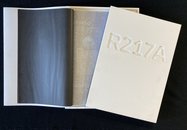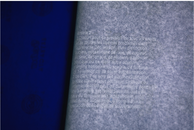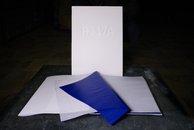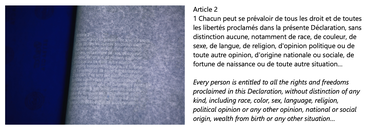Resolution 217A des Nations Unies: Déclaration universelle des droits de l’homme.
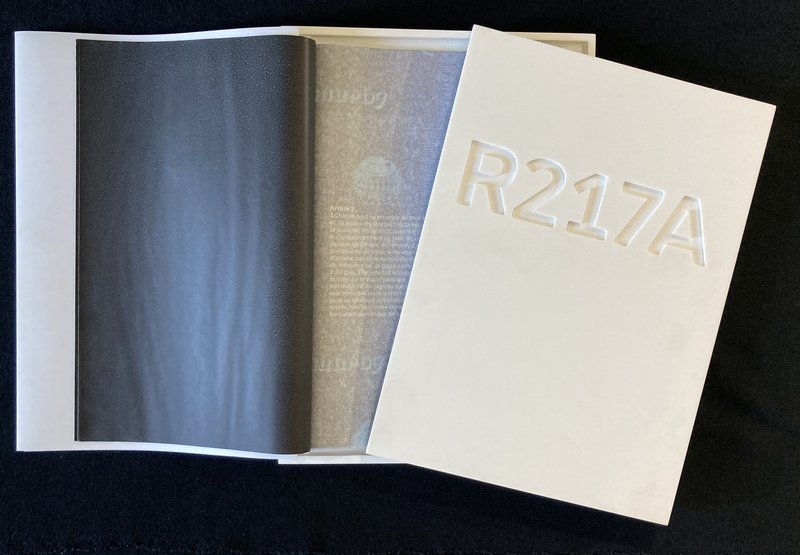
Mutel, Didier. R217A: Resolution 217A des Nations Unies: Déclaration universelle des droits de l’homme.
Paris: Didier Mutel, 2016.
(30 x 20 cm). 70 leaves. Silk and carbon paper, printed with white ink on white silk paper, binding by Veronika Schäpers in stiff white Japanese paper wrappers. Each copy is housed in a white Corian two-piece box with a debossed title on the front cover. Signed by Didier Mutel. 108 copies, of which 5 deluxe (40 x 30 cm. sold out), 3 hors commerce for the collaborators, and 100 regular copies.
R217A reproduces the text of the United Nations Resolution 217A, the Universal Declaration of the Rights of Man, made December 10, 1948, which was ratified by the UN General Assembly in Paris by 58 member states. Mutel’s work, printed with white ink on white paper, reminds us that although these rights can be at times nearly invisible, they nonetheless exist. By interleaving his book with blue carbon paper R217A makes a gesture toward its own reproduction, the inky blue serving as a “positive contaminant” that rubs off on each reader. The work is both an elegant metaphor and a tour de force of craftsmanship and printing.
The language in the 1948 Declaration is far more inclusive of the rights of every person:

Mutel received the prestigious Prix Liliane Bettencourt pour l’Intelligence de la Main, a juried prize for “exceptional talent” that recognized R217A as a work “resulting from a perfect mastery of techniques and savoir-faire of artistic craft” as well as demonstrating “innovation, and contributing to the evolution of this knowledge.”
Mutel has said of his book: “this artist book presents a text fundamental to modern history: The United Nations Declaration of Human Rights of Man. Printed with white ink on white paper, it can be seen as an empty book. Graphically and poetically, it suggests the words from Maupassant’s Horla, “and yet, have you ever seen it, and can you see it? and yet it exists for all that.” Even while it seems invisible, this text exists in the book and in ourselves. In between every white page is blue carbon paper that affirms the transmission of these ideas. The reader might take away on his fingers, a little bit of the blue carbon ink. Some of the carbon ink might also go onto the white paper. For me, a book is a very dynamic object.”

Click here to hear Didier Mutel speak about R217A and his studio
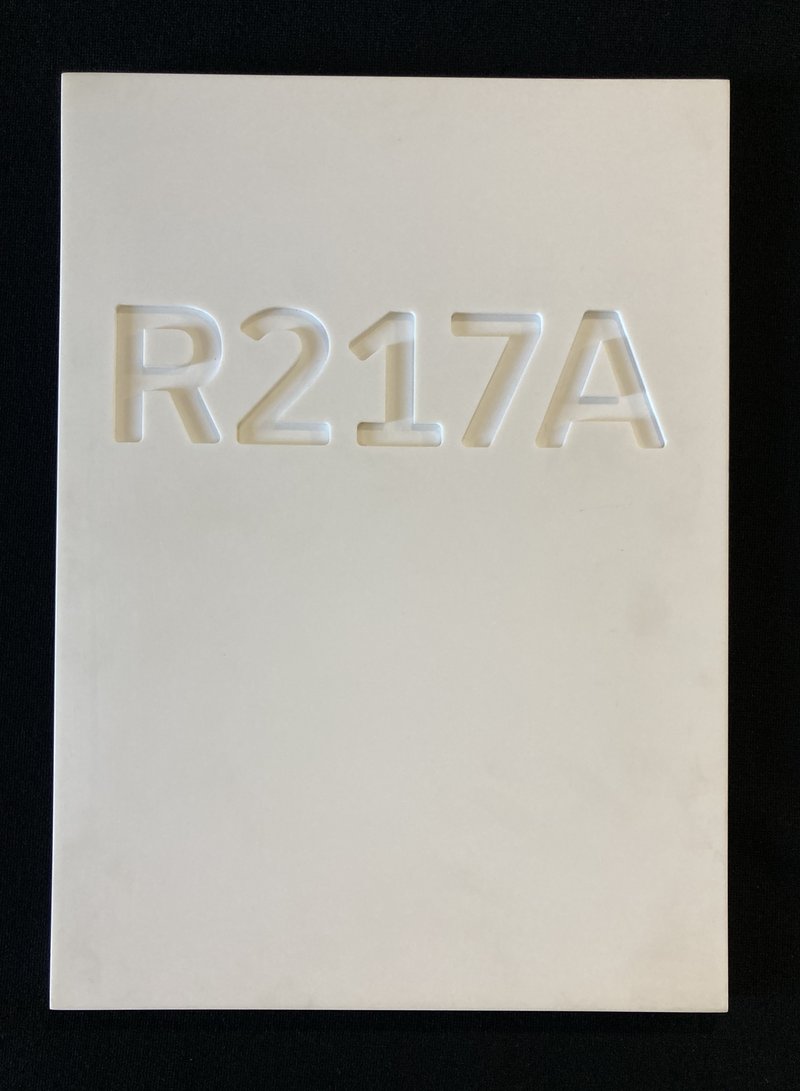
Description: R217A description-images
